Sunday Summaries 06/03/2016
By Mento 0 Comments
A belated March welcome to you all. It's already been snowing like crazy here, so you know that this is going to be an unpredictable month. Talking of unpredictable, it's been a curious week for news: Microsoft seems to be hedging its bets in the console vs. PC war with a strategy that involves more simultaneous PC and Xbox One releases, to the presumed dismay of those who thought they were getting the better exclusives by buying an Xbox One over a PS4, while Nintendo dropped a veritable hoard of games to come in their most recent Nintendo Direct release. I generally don't pay a lot of attention to new game announcements, which is somewhat ironic given that "new games" is the very next header, but it does adroitly demonstrate that - even though January and February were no slouches this year - March is traditionally the month when the Winter GOTY catch-up season is over and we all start getting hyped about new games again.

While I'm pleased about the Microsoft and Nintendo news, I'm a little worried about this Japanese PlayStation TV discontinuation business over on the Sony side. I decided a little while ago that my gateway to the PlayStation Vita would be through the PSTV; while I have no issues with portable gaming - I'm crazy into Pokémon Picross right now, F2P warts and all - I've found that it's a poor medium for RPGs and other types of games that I'm likely to play in long stretches. There's the ever-present issues of eye strain and how most portables will cramp up your hands after so long, but there's also the fact that if you're playing on a portable device for an extended amount of time you'll almost certainly be doing so while the AC is plugged in, essentially rooting you to a spot in a manner not entirely dissimilar to playing its console and PC brethren. At that point you might as well stick it on a TV and get the bigger display. One minor downside to PSTV that I discovered was that it wouldn't support the EU/NA PSV localization of curious anime puzzle-adventure game Danganronpa: Trigger Happy Havoc, but now that the first of those (and presumably the second to come later) is out on Steam that issue pretty much solved itself. With the news of the PSTV's discontinuation in Japan though, I expect many new JRPGs - pretty much the sole reason to get a PSVita, at least for me - won't see any developer-side efforts to make them PSTV compatible, given that it's no longer a priority for their core Japanese audience. Time will tell, I suppose, but I wonder how long the PSTV has left over here now. Or, hell, how long the Vita itself has left. When is the best time to jump into the Vita library, I wonder? Now? Or maybe last year?
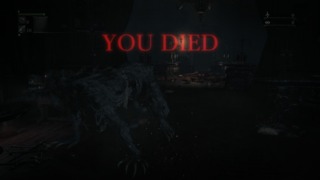
Meanwhile, I think it's about time I sped things up over here. I completed a whole one game last month (it was Bloodborne, natch), which is a glacial pace to say the least, and these summaries can get a little samey with one game dominating them week after week. To resolve this, I'm going to try to squeeze in smaller games to talk about every week alongside the recurring longer ones. I've got a full stack for this year's May Mastery feature, mostly because I will never run out of Steam backlog games for as long as I live thanks to sales and bundles, so it shouldn't be a big deal to pluck something out of that library for a test drive on a weekly basis. I'm usually loath to juggle multiple games as part of that slightly OCD approach to gaming that I've talked about recently with my travails as a completionist, but I'm barely going to hit thirty completed games for 2016 at the rate I'm going right now. Hmm... maybe I should start playing more of these Wiki Project games thoroughly?
New Games!
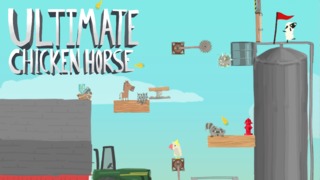
The game I'm most excited about this week is Ultimate Chicken Horse. While not the perfect party game - it requires a certain amount of platforming finesse, so it's not something with a level playing field a la the Jackbox Party Pack games - it does seem like an awful amount of fun with two or more players disciplined in Mario-fu. The Chicken Horse aspect of the title is apropos, and not just because it happens to feature those two creatures: it's a game about taking risks and then taunting other players to follow along the same merry path of deathtraps you've set out. I think the cutesy, anything-goes "party game" presentation is a little disingenuous: the core of the gameplay suggests that it's more about pure skill and proving your mastery over your opponents by creating Super Meat Boy style obstacle courses that only the best player (i.e. you) has a chance of defeating. Or you just make a level impossible to complete by sticking an impassable barricade between the players and the goal and have a big laugh about literally stonewalling any and all progress.
Also this week we see the potentially divisive Tom Clancy's The Division, about a post-apocalyptic soccer league where maybe the ball is someone's head? Was there ever a soccer variant of Mutant League Football? We'll also see that new Hitman episodic sequel/reboot thing, which I believe retails as either a full price AAA game that acts as a season pass for the missions to follow or as a smaller one-off that only pays for the first of its many scenarios to give players a taste for creative murderin'. I'm curious to see how that content delivery system goes for its publishers Square-Enix, and how much more the episodic game format will creep into the higher tiers of game development. Of course, most smaller studios go episodic because they need the revenue made from the first episode (and the promise shown by the first, in terms of selling season passes) to pay for the second and third and so on, so for a major studio like Square-Enix to take the same route with an established franchise like Hitman strikes me more that they're conducting an experiment with this format than they are particularly worried about earning the revenue to finance the next adventures of Agent 47. Still, they did something similar with Life is Strange and will do again with the Final Fantasy VII remake, so perhaps this is just what they're about now. Maybe Tomb Raider 3 will be split up into episodic tombs. Epitombic? Let's workshop that for later. Last but definitely not least is Shardlight, the new Wadjet Eye Games-published graphic adventure game. I'm always happy to play yet another of their old-school point-and-click affairs, even if they've been going to the post-apocalyptic well once too often of late. That's how you get radiation poisoning, you know.
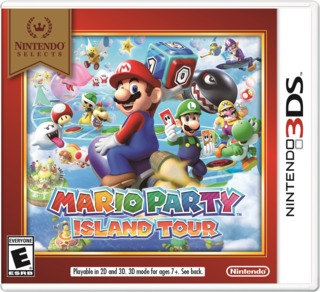
This week will also see a huge number of budget-priced Wii U and 3DS games appear in North America as part of Nintendo's "Nintendo Selects" range, many of which came out in Europe last October. No idea what's going on with those, but I'm always down for cheaper Nintendo games. Xenoblade Chronicles X hasn't dropped in price at all in the three months since its release... (For that matter, neither really has DKC: Tropical Freeze or Smash Bros for Wii U, both of which are a lot older.)
I also want to give a special shout-out to last week's Stardew Valley, which I think everybody slept on until it suddenly became the hottest thing in the past few days. I should get around to playing it: there's collectively been over a dozen Harvest Moons and Rune Factorys and Innocent Lifes in the last decade, so to get the acclaim and attention Stardew is seeing means that there must be something to it. Plus, I've heard it has some Terraria elements and I'm always down for another Terraria-like. (Plus, No Man's Sky is starting to sound like a fancier version of Starbound - a.k.a. Space Terraria - so maybe this will be a good year for that sort of experience.)
Wiki!
That NES 1986 project? In the bag. As expected, it didn't require a huge amount of work beyond that gaggle of math educational games that I somehow neglected to add to the wiki the first time through. In fact, only one other Famicom game - the murder mystery menu-driven adventure game Murder on the Mississippi, which is better known here for its C64 and Apple-II incarnations - required any significant amount of work this week. The rest was just typos and missing details. The NES wouldn't hit its peak until around 1989 or 1990, around the point where it was directly competing with the Sega Genesis just prior to the Super Nintendo's launch, so 1987 and 1988 will each take a little more work respectively. For the time being, the NES will be put away so that I can focus on its younger sibling for a spell.
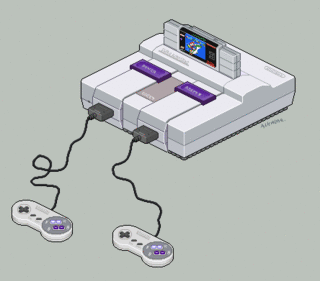
Which is to say that I finally started on the Super Nintendo library of 1995: approximately 410 games. It's less than 1994's enormous 491, but it's not a small number by any stretch. Most consoles would be lucky to see 410 releases total, let alone that many in a single year, but that's the sort of sway the Super Nintendo had back then even after the Sega Saturn and Sony PlayStation had arrived to draw the industry's attention elsewhere.
I haven't managed to get too far through the pile yet: I started with the 1995 games that debuted in Europe, before moving onto the US games released in January and a handful of Japanese ones. This relates to how the recorded release dates for older games can get a bit weird: for Japan, we have specific dates to the day for game releases, presumably because Japan is a relatively small amount of ground to cover compared to the whole of North America or Europe. It's easier to release a game everywhere at once when you're only concerned with one sovereign state - albeit, one of the largest in the world in terms of population if nothing else. With North America, we instead only have the month to go on: we might know that a game was released in January of 1995, but very rarely do we know the exact day unless it had a lot of press behind it, such as the September 13th 1993 "Mortal Monday" launch for every console conversion of Midway's Mortal Kombat. Possibly due to FIGS localization or the amount of additional geography and licensing to deal with, European launch dates are even more vague: the year is the only known quantity, making games that were only released in Europe (or were released in Europe first) hard to place in a chronological list.
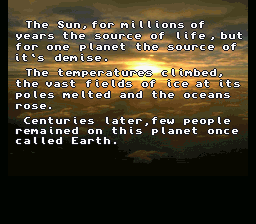
Anyway, since most of these games were first released in the West, the following SNES pages I worked on this week should be familiar: the console version of Waterworld, which isn't quite the quarter-munching non-game that Milhouse demonstrated that one time but is still fairly poor; the equally wet SeaQuest DSV tie-in game, which was fairly similar to Waterworld, though to be fair there were only so many things you could do with boats in the 16-bit era; Alexey Pajitnov's BreakThru!, the game that combines Tetris with SameGame; the SNES port of Might and Magic III: Isles of Terra, which I previously looked at during 2014's Octurbo CD series; and, uh, the hot bangers that are Rap Jam: Volume One and ClayFighter 2: Judgment Clay. If anyone wondered why everyone preferred console games developed by Japanese companies back then, I think you have your answer. Speaking of which, I also took some time detailing the roster of the Super Famicom-exclusive fighting game Super Chinese Fighter from a cartoonish martial arts franchise that would only occasionally make their way to North America: Super Ninja Boy is the only SNES game we saw from that series. At one point the series went into space, which is why there's a bunch of weirdos in a Chinese/Kung Fu fighting game, along with archetypes you might expect like a Xianghua/Chun-Li female combatant, a chef who throws noodles and a jiang shi. Look, Japan's relationship with China is complicated, OK?
Ys Origin!

There's so many things I want to talk about regarding Ys Origin, from its linear purity as a dungeon-crawler to its presentation and great music, but to keep things simple I'm going to stick with an aspect that sets it apart from other Ys games like Ys: The Oath in Felghana and Ys: The Ark of Napishtim - both of which use the same engine and otherwise play very similarly. That aspect is Ys Origin's multiple protagonists.
When you have an action RPG with multiple characters where they have different stories to witness but share most of the same level design and bosses, that's usually an indication that the game was made on a budget and needed an inventive way of padding out the runtime for those who came to an RPG like Ys expecting a 30-hour runtime or longer. The game is built for multiple playthroughs, though at the same time there's not a whole lot of varied strategies and customization on offer in the main game itself: Ys Origin is incredibly linear, despite what appears to be SpaceWhipper style "traversal enablers" like a double-jump or a means to stay underwater for a long time. Rather, these improvements act more like the dungeon items in Zelda: you'll need to find them to get through the rest of the area, and then they'll only very rarely come into play after that point. The level design is such that you'll never need to come back to a much earlier area with a new upgrade for some item you missed: from the moment you enter a new part of the dungeon to the moment you defeat its boss, all the items are accessible if you're able to find them. Likewise, the game only has three types of magic and each enemy has a vulnerability to one or more of them, which means that combat strategies never change from playthrough to playthrough. There's only two reasons you'd ever want to play through the game's central Darm Tower again: either on a much harder difficulty, or via a different character's moveset and perspective.
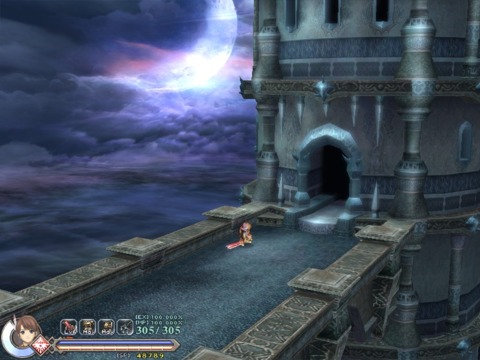
That's where Ys Origin's multiple characters come into focus. The player can initially select between Yunica Tovah and Hugo Fact. Yunica is an axe-wielding fighter with zero magical ability, making her the game's Adol Christin - the traditional Ys hero, who in the game's timeline won't be born for another seven hundred years. Yunica's story is a fairly standard "what it means to be a hero" arc as she gains in confidence and overcomes her weaknesses and self-doubt to defeat the game's antagonist on the tower's summit. Gameplay-wise, she's all about aggression and getting in close with her axe, balancing decent speed and offensive ability. Hugo, meanwhile, is a mage of the Fact family - the antagonist of the original Ys game was of the same family, and Hugo frequently struggles with how his abrasive and aloof attitude towards others and desire for strength can often overpower his moral center. I'm not far enough along Hugo's storyline to know for sure if the game is positioning Hugo as the eventual Dark Fact of Ys 1, or if his arc is simply to demonstrate how someone of a similar disposition and a less happy childhood, say a distant descendant, might choose the darker of two paths. I'm sure that ambiguity was the intent, since Ys fans know that someone named Fact will one day throw his lot in with the demons and try to conquer Ys in the many years between Ys Origin and the first Ys game. Hugo uses magic, which essentially turns the game into an on-foot shoot 'em up akin to something like the Pocky & Rocky games. Enemies don't stagger under Hugo's relentless magic bullet assault despite its huge damage output over time, so with Hugo strategies tend to amount to getting some distance before planting yourself and letting off a torrent of energy until the enemy either dies or once again gets too close for comfort. His acquired skills are different from Yunica's as well: while Yunica's were all offensive boosts, Hugo's are more defensive in nature. Yunica gets a hurricane that hits multiple times, an explosive short-range burst and a ranged fire attack, while Hugo instead gets an energy shield, a trip mine and circling fireballs which block projectiles and hurt enemies that wander too close: each of which are intended to assist in Hugo's "get some distance" stage of his attack plan, forcing him to resort to his standard magic for any meaningful damage. There's a third character too, but I've yet to play as him: he looks to be the type of character who gives as good as he gets damage-wise, and intended for experts.
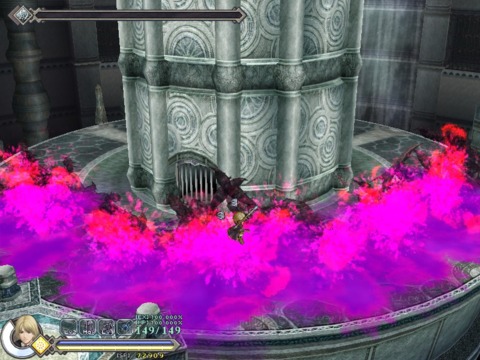
What this does is create some very interesting differences in the game's boss fights: easily the highlight of any Ys game, of which Ys Origin is no exception. Each boss has a selection of moves, some of which only appear as the boss drops in health and gets more desperate, and because of the differences between the two characters (so far) different boss moves create different problems. I'll use the first major boss of the game as an example of what I mean: a massive scorpion demon creature called Velagunder which you can see in the screenshots for the Comic Commish I made last week. One of its attacks produces a sea of venomous bubbles which float out a bit and hover between you and the boss's weak point, causing damage if you bump into them. With Yunica, she can charge right through the bubbles with her axe, getting in some hits before the next boss attack. Hugo, however, cannot penetrate the bubbles with his magic, which either means he has to wait for them to dissipate - giving the boss time to proceed with its next attack - or try to maneuver through them and suffer a few hits. Hugo's at a severe disadvantage in this case. Another Velagunder trick involves creating little grub-like "adds" which Velagunder will devour during his "inhale" move: this inhale can catch the player character if they're not careful, doing extreme damage. Based on the number of these adds that he eats, he'll also recover a substantial amount of health, so it behooves the player to eliminate them all as soon as they appear. Yunica has more trouble with this, because she has to chase after each individual one while keeping an eye on the boss and whatever it has coming up next. Hugo, meanwhile, can quickly obliterate them all with his ranged magic without losing a beat. With each subsequent boss I've fought, the level of challenge and required tactics have shifted: not just because of the character's difference in range and damage output, but by how the boss's attacks are designed to give one character minimal problems while the other might suffer a few game overs until the player can figure out how to survive them. It's fairly ingenious design, and ably demonstrates that - like a certain action-RPG series of some repute to come later - the core of the Ys series is in its boss encounters.
Even though I had zero intention of playing through the game again as an alternate character, simply trying Hugo out a bit after completing the game as Yunica, the differences between the two playthroughs are more significant than I thought. I can quickly move through all the obstacles and puzzles in the levels, now that I know how they all work, and focus on figuring out the boss fights and the new approach I'll need to take. I will promise that it won't take up another whole week, though; I'm as anxious as anyone else to play a lot of new games this month.
